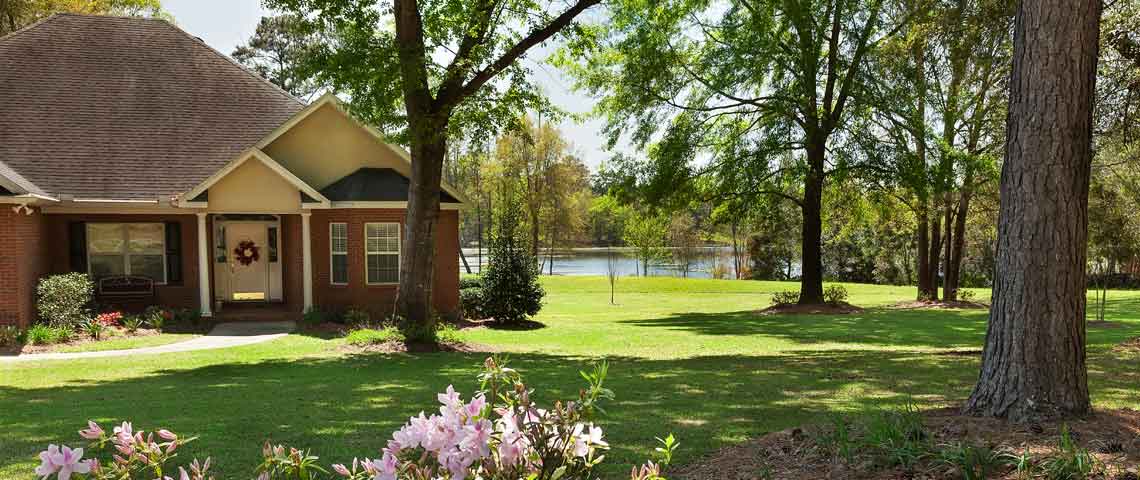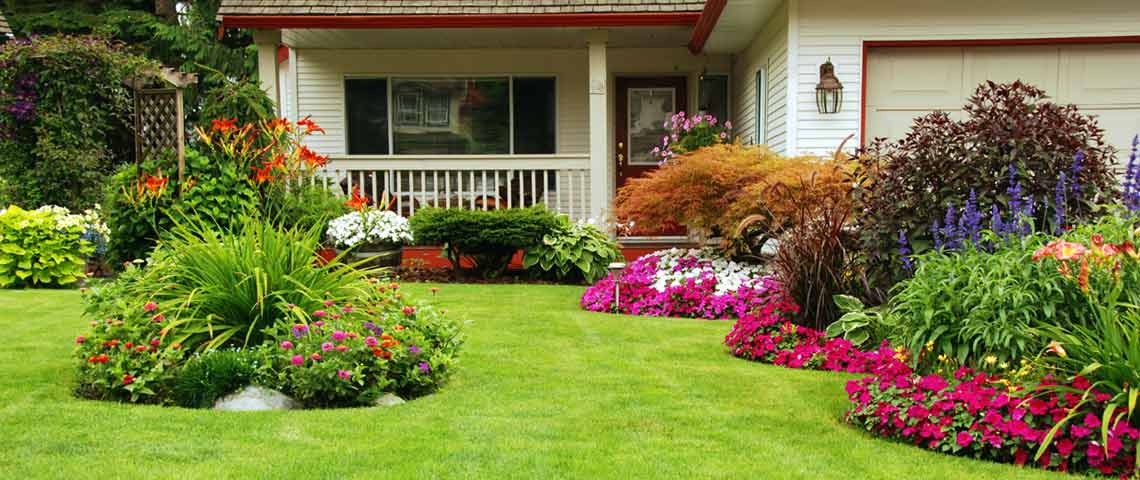What Is the Best Warm-Season Grass for Your Lawn
If you live in the southern half of the United States, most of the grasses you see in lawns, parks and athletic fields from coast to coast are “warm-season" grasses. These grasses get their name because their most active growth occurs during warm seasons, from late spring through summer into early fall. Their growing cycles and preferences for warm soil temperatures keep lawns in southern and southwestern climates green and growing in summer heat.
Though warm-season lawn grasses share many traits, they differ in significant ways. Some can only be grown from sod or grass pieces known as sprigs or plugs, but the warm-season grasses noted in the chart below offer the advantages of starting your lawn from seed. By understanding the characteristics of these perennial grasses, you can choose the best warm-season grass seed to meet your lawn maintenance and enjoyment goals.

Growing Regions
Grass professionals divide the United States into separate grass-growing regions based on cool and warm climates, humidity and aridity. Warm-season lawn grasses do best across the country's southern tier of states and up into the challenging midsection known as the transition zone, where cool, warm, humid and arid regions meet and merge. But choosing the right warm-season grass seed for your lawn goes beyond these climate basics to additional regional differences that affect lawn health and maintenance.
Regional norms for soil pH are especially important because soil pH affects your lawn's ability to use soil nutrients, including those you add through fertilizers. Most lawn grasses do best where soil testing reveals pH in the slightly acidic to neutral range of 5.8 to 7.0, where essential nutrients stay readily available. Lawns with soil pH outside this range may need applications of lime or other soil amendments to restore pH balance and nutrient availability.
Matching your grass to soil conditions helps reduce labor and the need for added fertilizers and amendments. For example, Centipede grass flourishes in acidic, low-pH soil common to the Southeast, but can't tolerate high-alkaline soils of the Southwest. Centipede grass, like Bahiagrass, experiences iron deficiencies in alkaline soil.1 Bermudagrass or Zoysia grass, which both tolerate higher soil pH and salinity, are better choices in such areas.
Maintenance Needs
All lawn grasses require mowing and fertilizing, but they vary significantly in those needs. Matching your grass to desired maintenance levels helps keep lawn care from becoming a burden. Bermudagrass is the fastest growing common warm-season lawn grass.2 Its aggressive, vigorous growth creates a dense, durable lawn — but it can mean twice weekly mowing and monthly fertilization during peak summer growth.
Zoysia grass needs less fertilizer and mowing, but thatch buildup can require dethatching, especially on fertilized lawns.5 Centipede grass has the slowest growth rate of common warm-season lawn grasses, and very low fertilizer needs. Pennington Centipede Grass Seed & Mulch offers a low-growing, very low-maintenance lawn with little input on your part.
For any type of lawn grass, mowing should be done as needed to keep the grass at its recommended height for optimal health and good growth above and below ground. This means never removing more than one-third of the blade during any single mowing. The faster the growth, the more frequently you should mow.
Heat Tolerance
Common warm-season lawn grasses in the U.S. came from tropical and subtropical regions around the world. As a result, these grasses are well-adapted to high soil and air temperatures. They stay green and growing during hot weather that would cause cool-season grasses to turn dormant and brown.
Bermudagrass is extremely heat tolerant — daytime temperatures of 95 to 100 degrees Fahrenheit are optimal.2 Pennington Bermudagrass Grass Seed yields dense, resilient, heat-tolerant lawns.
Zoysia grass, Centipede grass and Bahiagrass also tolerate high heat very well. Bahiagrass tolerates high humidity common in the hot Southeast, as well. Pennington Pensacola Bahiagrass Grass Seed offers greater tolerance to heat (and cold) than common bahiagrasses do.

Tropical lawns do best with grasses that thrive in hot, humid conditions.
Cold Tolerance
cool-season lawn grasses, which primarily came from Europe. In frost-free climates, these warm-season grasses may stay green year-round, but when temperatures drop below 65 F, root growth slows and grasses enter dormancy. They stay brown until temperatures rise back above 65 F in spring. Winter dormancy helps protect grasses from cold damage. Centipede grass is especially susceptible to winter injury because it lacks a true dormant period.4
Many southern lawn owners overseed their Bermudagrass, Bahiagrass and Zoysia lawns each fall with cool-season perennial ryegrass for green winter color — a practice that doesn't work well on Centipede lawns.4 Zoysia grass is very cold tolerant relative to other warm-season grasses. This gives it added value in transition zone lawns, where winter cold limits other choices. Pennington Zenith Zoysia Grass Seed and Mulch has improved cold tolerance. It stays green longer than Bermudagrass and other Zoysia grasses, plus it's one of the earliest warm-season grasses to green up in spring. Pennington Bermudagrass Grass Seed and Pennington Centipede Grass Seed and Mulch also offer superior cold tolerance.

Warm-season grasses go dormant during cold winter months.
Drought Tolerance
Deep extensive roots of many warm-season grasses help them withstand drought better than other grasses. Most lawn grasses typically need at least 1 inch of water from rainfall or irrigation per week. During extended dry periods, even drought-tolerant Bermudagrass and Zoysia grass may need 1 to 1 1/2 inches per week to stay green and growing.5 Without enough water, they may enter a period of protective dormancy and go brown until water returns.
Drought tolerance is not the same as heat tolerance. Heat-tolerant Bermudagrass has extensive roots that can reach 6 feet deep or more,2 resulting in excellent drought tolerance as well. However, heat-tolerant Centipede grass has relatively shallow roots that leave it very vulnerable to drought when grown outside regions with reliable rainfall.
Zoysia grass holds its color better than Bermudagrass during short drought periods, but Bermudagrass excels in extended drought.2,5 Deep-rooted, drought-tolerant Pennington Smart Seed Texas Bermudagrass Grass Seed and Fertilizer Mix withstands the rigorous Texas climate.

Alkaline soil in the Desert Southwest calls for grasses that tolerate high soil pH.
Shade Tolerance
As a group, warm-season lawn grasses do best in full sun. That means six to eight hours or more of direct sunlight each day. Sunlight fuels vigor, good color and healthy lawn growth. Some grasses tolerate less sun, but more shade leads to poor, thin growth and invites common lawn weeds and unwelcome lawn mosses in.
Among warm-season lawn grasses, Bermudagrass has the least shade tolerance. For best performance, it needs full sun. Centipede grass and Bahiagrass tolerate more shade than Bermudagrass, and Zoysia tolerates even more. However, even Zoysia grows weak with less than full sun. The more shade it gets, the thinner it grows. In shady transition-zone lawns, shade-tolerant cool-season tall fescue may be a better lawn option.
Traffic Tolerance
When you use your lawn for family activities, such as lawn games, pet play or entertaining, grasses need to stand up to traffic and wear. Lawn grasses vary in their traffic tolerance and ability to recuperate quickly from wear and other damage. Grasses are most susceptible to injury during dormancy. The ways they grow and spread during active growth influence recovery.
Bermudagrass and Zoysia grass are both aggressive growers that spread by stolons and rhizomes (above- and below-ground stems). This double growing action allows these grasses to recover quickly and repair themselves when wear or other damage occurs. They are favorites for southern athletic fields and golf fairways. Bahiagrass has a very open growth habit and spreads mostly by stolons.3 It's more vulnerable to damage and slower to recover. Slow-growing Centipede grass grows by stolons and doesn't tolerate foot traffic or recover well.
Whatever your goals for using and maintaining your lawn, you can choose a lawn grass that strikes the right balance between your desires and the needs of the grass itself. Pennington is dedicated to producing the finest grass seed and premium lawn care products possible, so that you and your lawn can succeed. With the Pennington email newsletter and online educational resources, you can learn, grow and enjoy a healthy, attractive lawn wherever you live.

Tough, durable Bermudagrass withstands heavy traffic on fairways and home lawns.
Pennington is a registered trademark of Pennington Seed, Inc.
Sources:
1. Patton, A. and Boyd J., “Choosing a Grass for Arkansas Lawns," University of Arkansas Cooperative Extension.
2. Duble, R.L., “Bermudagrass – The Sports Turf of the South," Texas A&M AgriLife Extension.
3. Trenholm, L.E., Unruh, J.B. and Cisar, J.L., “Bahiagrass for Florida Lawns," University of Florida IFAS Extension.
4. Duble, R.L., “Centipedegrass," Texas A&M AgriLife Extension.
5. Duble, Richard L., “Zoysiagrass," Texas A&M AgriLife Extension.


